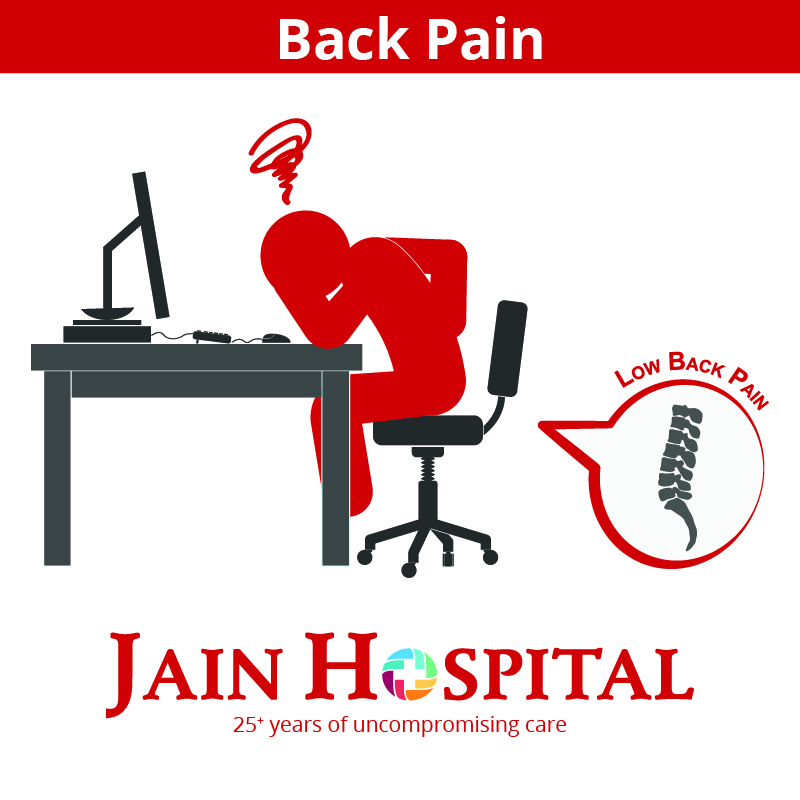Most of us have experienced a sharp stab in our backs due to a plethora of reasons. Whether it’s from sitting at your office desks for far too long or from lifting too much or even from sleeping in an uncomfortable position, back pain can knock at your doorstep at any time. Although, back pain likes to give surprises, its intensity is different for everyone. If your child is the one suffering from back pain, you can click the link here for pediatric chiropractic care.
The human back is composed of muscles, ligaments, tendons, bones and discs which work together to support the body. When a problem occurs in any one of these components, it causes backache. Pain in the lower and upper back happens for different reasons; however, sometimes the cause of the pain remains unclear especially if you don’t visit a pain clinic or a chiropractor Toorak.
Two categories of Back pain:
- Acute pain: Starts suddenly and lasts for up to 6 weeks
- Chronic pain: According to experts at the sports chiropractors Melbourne clinic, long term pain is the one that develops over a longer period and lasts for over 3 months accompanied by other problems
Common causes of Back Pain:
- Strained muscles or ligaments
- A muscle spasm
- Muscle tension
- Damaged discs
Activities that can lead to back strain:
- Improper lifting of an object
- Lifting heavy objects
- Poor or awkward posture while sleeping
- Unsuitable mattress that doesn’t support the body in keeping the spine straight
- Neck straining while driving or using the computer for a long time
- Standing or sitting for long periods
- Strenuous physical activity
- Making an abrupt movement
- Twisting
- Coughing or sneezing
- Over-stretching
- Bending awkwardly or abruptly
Some other aspects causing back pain:
- Smoking
- Poor physical fitness
- Obesity
- Genetic factors
- Stress, anxiety and mood disorders
- Pregnancy
- With age (older people are affected more by backache)
- Gender
- Medical conditions that directly affect the spine such as fever or kidney infection
- Sleep disorders
- Shingles that directly affect the nerves causing back pain
When to see a doctor?
According to a post at relaxthemuscle.com, prolonged pain when it is accompanied by:
- Weight loss
- Fever
- Swelling on the back
- When it extends down to the legs and knees
- Numbness/tingling in one or both legs
- Difficulty in urinating
- Bowel/bladder problems
- Numbness around the buttocks and genitals
How is the Diagnosis done?
Physical examination, imaging scan and other tests determine the state of the tissues in the back. A physical therapist may diagnose through visual inspection. If you find out that you have a herniated disc, it’s recommended to look into the available herniated disc treatment services immediately.
Pain relief:
Some overlooked remedies for back pain relief:
- Exercise your core which plays a huge role in spine support
- Stretch your hamstrings to avoid putting pressure on your lower back
- Engage your brain and find activities that make you happy including yoga, meditation and deep breathing techniques to release your endorphins
- You may also visit a chiropractic clinic to try their back pain management methods.
Home remedies:
- Massaging essential oils such as lavender and peppermint oil onto the affected area can give you quick pain relief
- Epsom salt bath: With its anti-inflammatory properties, Epsom salt bath can prove to be highly relaxing and soothing for the affected area
- Consuming fenugreek powder along with a glass of milk and honey can prove to be the solution to your back pain owing to its natural anti-inflammatory properties
- Turmeric milk and its pain-relieving properties are the perfect solution to all your pains
- Heat therapy via reusable heat packs is a good remedy to relieve muscle spasms
- Ice packs also have analgesic effects on back pain
- Eating foods that are rich in Vitamin B12, C, D and E are believed to improve overall health and relieve the symptoms of back pain
- Use alternative methods to relieve pain. For example, there are magnetic jewelry that are said to help with the pain and provide more energy.
- There are also cbd products like cbd oil and Medical Marijuana Concentrate Pens that may help relieve your pain. If you prefer smoking cannabis products, there are Hookah Accessory Supply stores you can visit to purchase high-quality smoking tools and accessories.
Prevention is better than cure; ways to block backache:
- Avoid foods that are known to cause inflammation such as dairy products, sugar and refined grains
- Increase the intake of anti-inflammatory and calcium rich foods such as fruits, vegetables, yogurt and nuts
- Yoga poses such as Child’s Pose and Triangle pose must be practiced to stretch your back and legs regularly
- Keep the discs of your backbone hydrated by drinking plenty of water
- Treat yourself to a massage here and there
- Provide support to your back when you sit or lie down for longer periods
Sleeping position to avoid back pain:
- If you have scoliosis, the best position is to sleep flat on your back, and as much as possible, you should get immediate scoliosis treatment.
- If you sleep on your stomach, place a pillow under your abdomen and pelvis to ease the strain on the back.
- If you sleep on your side, draw your legs to the chest and keep a pillow between your knees.
Sitting position to avoid back pain:
- Provide support to your back while sitting for longer periods
- Rest your entire back on the cushion of the chair
- Avoid sitting at the edge of your chair as it puts pressure on the back
These tips and tricks are life-saving; however, if the pain gets severe and lasts longer than a couple of days, consider visiting a doctors office.
